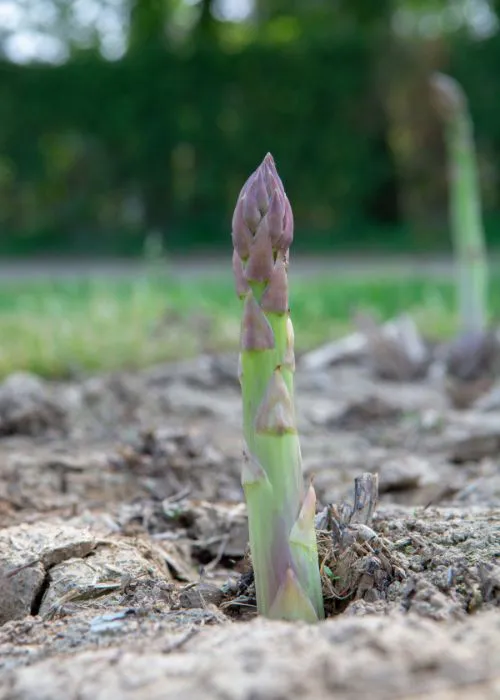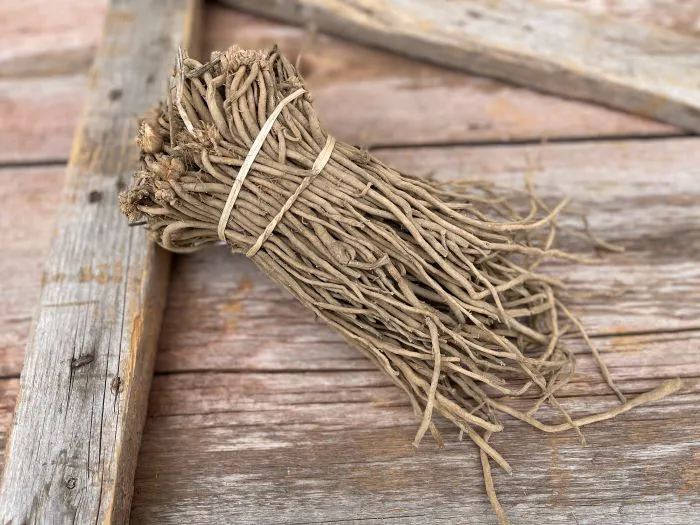How to Grow Asparagus – Plant 2-year Crowns to Harvest Sooner!
Asparagus is one of spring’s simple pleasures! As one of the earliest vegetables ready to harvest, having an asparagus patch in your garden is a delightful way to get garden fresh produce in your kitchen in the spring. Asparagus spears are tender, crisp & flavorful, not to mention, super nutritious. Once you have your asparagus bed established, these perennial plants can last up to 15 years, so choose your location wisely! Enjoy this simple guide on how to grow asparagus.
2-Year Crowns vs. 1-Year Crowns
We are excited to offer 2-year asparagus crowns as this decreases the amount of time until your estimated first harvest. Typical 1-year crowns are dug up after one year of growth. With 1-year crowns, it is recommended that you do not harvest anything the entire year after planting, with the first harvest window of 2 weeks not recommended until the second year after planting. As you may have guessed, our crowns have been grown for 2+ years before being dug up and delivered to you. The exciting difference with 2-year crowns is the first harvest window of 2 weeks can happen the very next spring!
General Asparagus Growing Information
- Location Considerations: Asparagus requires full sun. Since asparagus is a perennial and can continue to produce for up to 15+ years, choose a spot where it will not get disturbed.
- How Many to Order: Wondering how much asparagus to grow? Established asparagus plants produce about 1/2lb. of spears per bed foot in spring/early summer. If you are just getting asparagus established for the first time, we would recommend 5-10 crowns per person. (covers 15-30 row feet) If space is not an issue, grow more asparagus as it is easy to can or freeze.
- Soil Type: Asparagus prefers well-drained soil. We do not recommend mulching or fertilizing your asparagus until the roots are established. Be sure not to plant in any media containing bark or wood chips. Do not plant into containers smaller than 1 gallon.
- Planting Time: Plant asparagus crowns in the early spring, as soon as the soil can be worked. Many folks plant asparagus about the same time as potatoes go into the ground. This time will vary by region. Check with your local Extension office for information specific to your area.
Asparagus Arrival
- Asparagus will arrive as dormant, bare root crowns. For best results, plant as soon as possible.
- If you are not able to plant immediately, remove all packaging & gently loosen the crowns. Gently cover with newspaper and store in a cool location out of direct sunlight and wind until you can plant.
Asparagus Planting Instructions
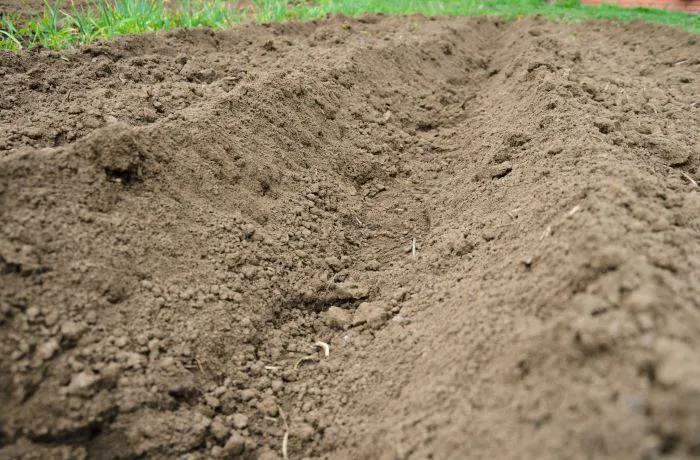
- Dig a trench that is 12-18 inches wide and 8 inches deep. Trenches should be spaced 2-3 feet apart. It is recommended, but optional, to add a layer of compost and/or an all-purpose fertilizer at the bottom of the trench. (Check out our Veggies Organic Fertilizer Products)

2. Lay the root flat in the bottom of the trench with the crown, or top of the root, upright in the middle with “tentacles” spread evenly in each direction.
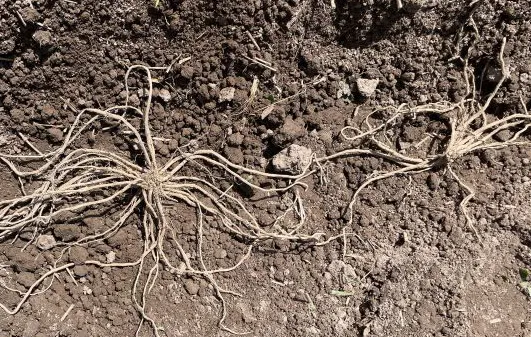
3. Space plants in the trench so “tentacles” touch, with crowns approximately 12-18 inches apart.
4. Put only 2-3 inches of soil on top at planting time. Add more soil incrementally as the spears grow.
5. Water immediately after planting.
6. Keep the asparagus bed free of weeds.
7. Allow plants to establish a healthy root system during the planting season by letting all spears grow fully. They will produce fern-like growth, up to 4 feet, depending on the variety. Do not add mulch at this time.
*NOTE: First sprouts usually appear within 2-6 weeks of establishing an asparagus patch, depending on soil temperatures & moisture level.
Spring Care & How to Harvest Asparagus
- In the spring, cut the dead foliage back before the first spears emerge.
- Begin harvest for up to 2 weeks the first year and then allow them to grow into ferns & establish a strong root structure. In subsequent years, increase your harvest time until you get to a 6-8 week harvest window.
- Harvest when spears are 6-8 inches long. Eat immediately or store in the refrigerator in a plastic bag for up to a week.
- After the harvest window, allow the plants to fern out and gather energy for the following spring.

Keys to Asparagus Success
- WATERING – Soil moisture is important for good root and fern development in asparagus. Consistent moisture throughout the whole year helps the roots stay healthy for the following season.
- WEED CONTROL – Weeds compete with asparagus for not only water but also nutrients and light. It’s important to keep your asparagus free of weeds to keep them happy!
- DON’T OVERHARVEST – It is recommended to only harvest 2-year crowns for 2 weeks the first spring. In subsequent years, increase your harvest time until you get to a 6-8 week maximum harvest window. After the harvest window, allow the plants to fern out and gather energy for the following spring.
- SOIL HEALTH – It is recommended that you apply compost and/or an all-purpose vegetable fertilizer (Check out our Veggies Organic Fertilizer Products) to the soil per application rates on the package at planting time. Once the bed is established, it is best to test the soil every three years to determine if your soil needs more fertilizer and/or compost and amend accordingly.
Enjoy Your Asparagus!
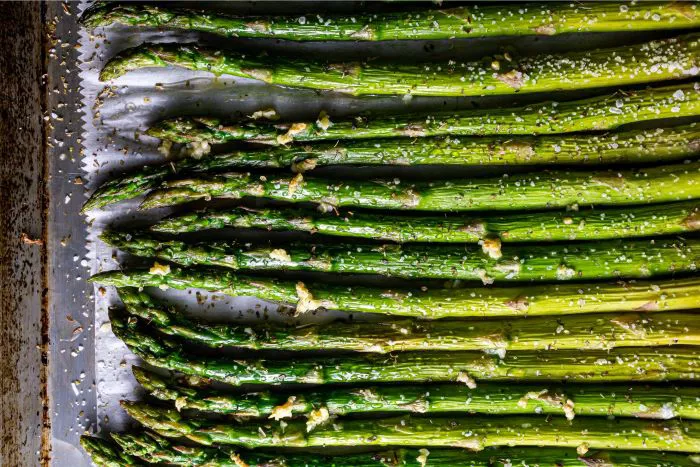
- Asparagus is so tasty simply thrown on the grill or roasted in the oven with garlic, salt & pepper.
- Cream of Asparagus Soup is a hearty spring favorite!
- Asparagus is a fantastic quiche component, especially paired with Swiss cheese and mushrooms!
- Asparagus, lightly blanched, freezes well. We chop it into bite-sized pieces to enjoy all year.

